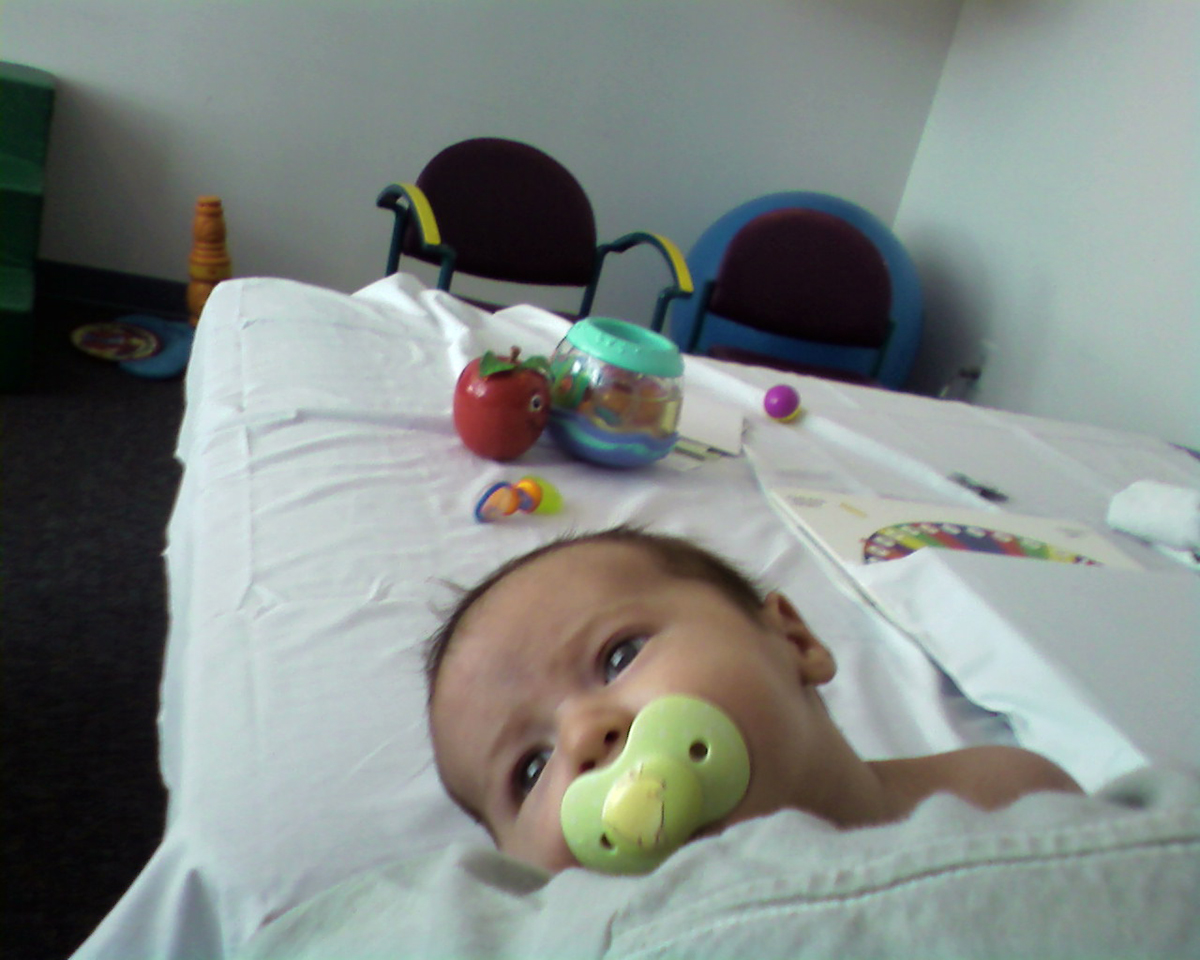Table of Contents
Congenital torticollis is a condition in which the sternocleidomastoid is tight on one side, leading a baby to have their head twisted to one side all the time. With the right exercises, the condition usually resolves quickly.
Diagnosing Torticollis
A physical examination in which the physician determines how far the baby can move their neck combined with X-rays of the neck are used to diagnosed torticollis. Your pediatrician will almost certainly notice the symptoms of tortocollis themselves, but if you have spotted the signs, you should certainly bring it up and ask for an examination. Most cases of torticollis are "stand-alone", but because the condition can be related to hip dysplasia, Klippel-Feil Syndrome, Down Syndrome, infections, factures (including those that may have happened during childbirth), or even because of adverse reactions to medication, it's important that the cause of torticollis is determined.

If your pediatrician didn't already know about the circumstances of your baby's birth, they will ask you detailed questions, as difficult births and abnormal fetal positions are contributing factors.
Treating Torticollis: Something That Can Usually Be Done At Home
Once diagnosed, your doctor will most probably suggest stretching exercises for you to complete at home with your baby. These exercises serve to strengthen the sternocleidomastoid muscle on the unaffected side, while loosening the one on the affected side. Treatment is necessary in order to ensure the baby's face and skull develop evenly, and the baby will develop the full range of neck motion. These exercises are simple in nature and involve you encouraging your baby to move their neck to the other side:
- Offering the non-preferred breast.
- Offering a bottle in such a way that encourages the baby to turn to their non-preferred side.
- Using toys to encourage your baby to look in both directions.
- Placing your baby to sleep in a way that encourages them to look at their non-preferred side. Babies want to see what's going on around them, so try to get them to twist their head to the weaker side in order to see you as you enter the room.
- "Tummy time" to strengthen your baby's neck muscles.
These exercises aren't complicated at all, but do ask your pediatrician to explain them in detail, and ask questions if you're not quite sure what they want you to do. As you see, all the exercises serve to get your baby to look in the direction that doesn't come naturally to them because of the torticollis.
If the condition is discovered early enough — by two to three months at the latest — these exercises should lead you to see an improvement within a matter of weeks. Stretching exercises work best in babies between the ages of three and six months.
The torticollis should be totally gone by the time your baby is one year old. In about 15 percent of cases, however, surgery of the sternocleidomastoid muscle is needed to correct the problem. This surgery is also known as "muscle release surgery". This will usually be recommended if the torticollis hasn't resolved by 18 months of age, and it will cure most cases of torticollis that don't go away with stretching exercises alone. In other cases, your pediatrician will suggest sessions with a physical therapist.
- Photo courtesy of SurfaceWarriors via Flickr: www.flickr.com/photos/navalsurfaceforces/14494218281
- Photo courtesy of ThrasherDave via Flickr: www.flickr.com/photos/dmatos/2832591681


Your thoughts on this